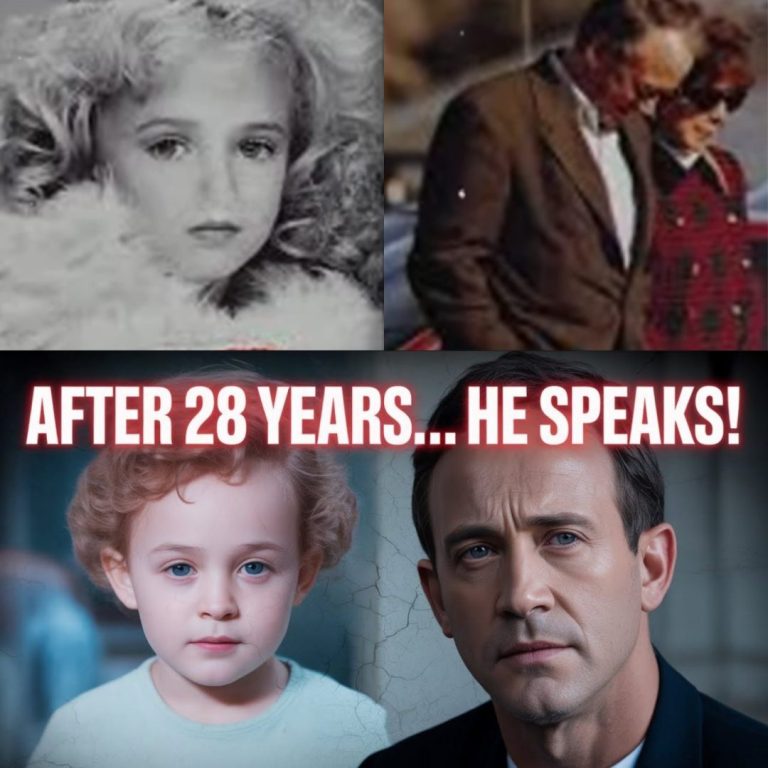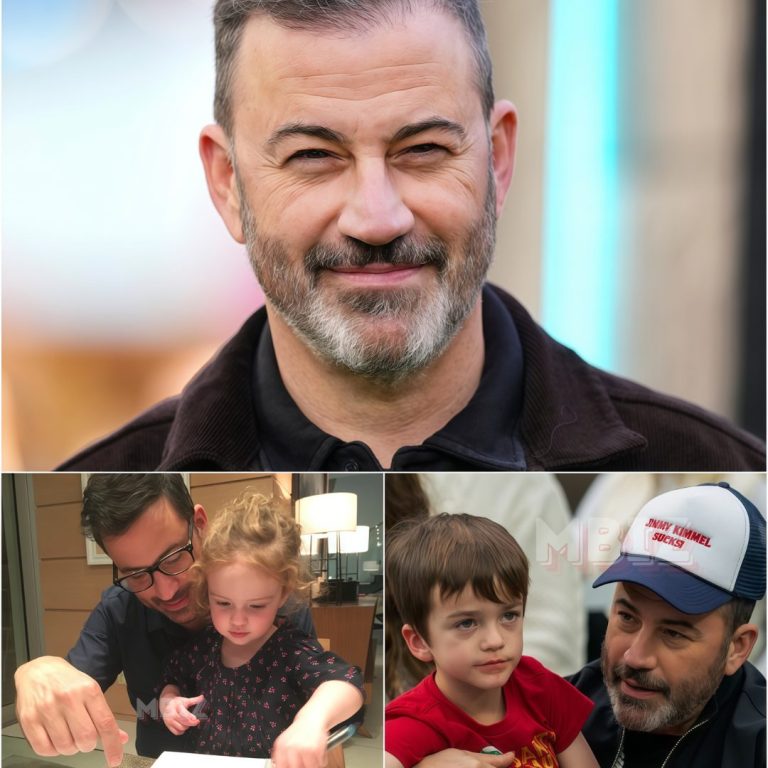After 28 years, the mystery surrounding JonBenét Ramsey—the six-year-old beauty queen whose tragic death in 1996 stunned the world—may finally be close to resolution. With her father, John Ramsey, breaking his silence and new DNA technology changing the game, the world finds itself on the edge of answers it’s been seeking for decades. But as the truth inches closer, what’s emerging isn’t the closure anyone hoped for—it’s a story that continues to haunt, divide, and challenge everything we thought we knew.

There was always something magnetic about JonBenét. Bubbly, bold, and precocious, she embodied the spirit of Boulder, Colorado—a town more known for yoga at sunrise and kombucha than for the kind of suit-and-tie world the Ramseys came from. John Ramsey, her father, always seemed quiet, unreadable. He was the first to find JonBenét, but in that moment of heartbreak, he unwittingly compromised the crime scene, erasing crucial evidence. Yet, oddly, police scrutiny seemed to focus elsewhere, leaving John in the background, a grieving father—or perhaps something more.
John Ramsey’s story is layered, marked by success and tragedy. Born in Nebraska, he was no stranger to achievement—degrees in engineering and business, Navy service, and a career that soared when he founded Access Graphics, a tech company that raked in over a billion dollars in revenue by 1996. That same year, John was named Boulder’s Entrepreneur of the Year, his net worth climbing to over $6 million. The Ramseys weren’t just wealthy—they were fixtures in Boulder’s social scene, active in church and community events, their lives seemingly picture-perfect.
But beneath the surface, the family’s story was more complex. John’s first marriage ended quietly after 11 years, and in 1980 he married Patsy Ramsey, a former beauty queen with a big heart and an even bigger presence. Together they had Burke and, in 1990, JonBenét Patricia Ramsey—the little girl whose smile would soon be known across America for all the wrong reasons.
JonBenét’s life was a whirlwind of pageants, school, and family gatherings. The Ramseys were present, supportive, and—at least outwardly—happy. In the days before Christmas 1996, their home was filled with friends, laughter, and holiday cheer. On December 25th, JonBenét received a gold bracelet engraved with her name—a sweet, now heartbreakingly symbolic gift. The family was preparing to fly to Michigan to visit John’s older children, a trip he’d planned to pilot himself. Everything seemed normal. Everything seemed safe.
But in the Ramsey house, normalcy shattered overnight.
On Christmas evening, a brief 911 call was made from the home, then abruptly cut off. Police checked in, but a family friend dismissed it as a mistake. The night continued, gifts were opened, dinner was served, and JonBenét was tucked into bed. But by dawn, Patsy Ramsey awoke to a nightmare—her daughter’s bed empty and a chilling, three-page ransom note left on a back staircase. The note demanded $118,000, the exact amount John had received as a Christmas bonus. Panic set in. Patsy called 911, her voice frantic, her words oddly detached, focusing more on the note than her missing child.

Police arrived to a scene already compromised. Friends were called to support the family, some even cleaning the kitchen and moving objects—actions that would later frustrate investigators. Despite the ransom note’s warning not to call anyone, the house was filled with people. The crime scene, already delicate, became nearly impossible to preserve.
Hours passed. Then, at 1 p.m., John Ramsey and a friend searched the basement. In a little-used, hidden room, John found JonBenét’s body—her mouth taped, a garrote fashioned from a broken paintbrush around her neck, her body carefully arranged and partially covered with a white blanket. In his grief, John carried her upstairs, unwittingly disturbing vital evidence. Investigators were left with more questions than answers.
The autopsy revealed JonBenét had been strangled and suffered a skull fracture. There were signs of 𝑠e𝑥ual trauma, but no semen was found. Unidentified male DNA was discovered on her underwear, leggings, and under her fingernails—DNA that didn’t match anyone in the family, or in the FBI’s database. This was the detail that, in 2008, led the district attorney to publicly clear the Ramseys, pointing instead to an unknown intruder. But not everyone agreed. Some experts argued the DNA could have come from the clothing’s manufacturer, others insisted it belonged to the real killer.
The ransom note itself was another puzzle. Written inside the house, it was unusually long, filled with references that suggested intimate knowledge of the family. Behavioral analysts noted a maternal tone, handwriting experts couldn’t definitively rule out Patsy, and suspicion lingered. The note’s specificity—the bonus amount, the familiarity—deepened the mystery.
Other clues only complicated things. A flashlight, possibly the weapon, was found clean of fingerprints and DNA. A rope in a guest room was unrecognized by the family. A bootprint in the basement didn’t belong to anyone in the house. Even a pubic hair on the blanket was a mystery. The infamous bowl of pineapple in the kitchen—bearing Burke’s fingerprints—suggested JonBenét may have eaten with her brother late that night, contradicting the parents’ statements.

For years, every piece of evidence pointed in two directions. Was the killer inside the house, staging a kidnapping to cover up a darker truth? Or was an outsider responsible, slipping in through a broken basement window and vanishing without a trace? Theories abounded, but none brought closure.
Now, nearly three decades later, John Ramsey has stepped forward, pushing for advanced genealogical testing in hopes that science can do what detectives never could—identify the source of the mysterious DNA and finally deliver justice for his daughter. The latest breakthroughs in forensic technology offer hope, but they also raise new questions. If the DNA belongs to an intruder, why did no one ever follow up with the ransom demand? If it came from the factory, what does that say about the investigation’s foundation? And if it’s someone close to the family, how did they evade detection for so long?
As the world waits for answers, the JonBenét Ramsey case remains a haunting reminder of how one tragedy can ripple through decades, leaving families, investigators, and an entire nation searching for truth. John Ramsey’s grief is palpable, his determination to find justice unwavering. But for every answer, five new questions emerge. The truth, it seems, is always just out of reach.
This case endures because every detail—every clue, every action—feels both innocent and suspicious. It’s a story that refuses to fade, a mystery that demands attention. And now, as groundbreaking DNA technology brings us closer than ever to solving it, the world holds its breath, hoping that after 28 years, JonBenét Ramsey’s memory will finally be honored with the justice she deserves.






